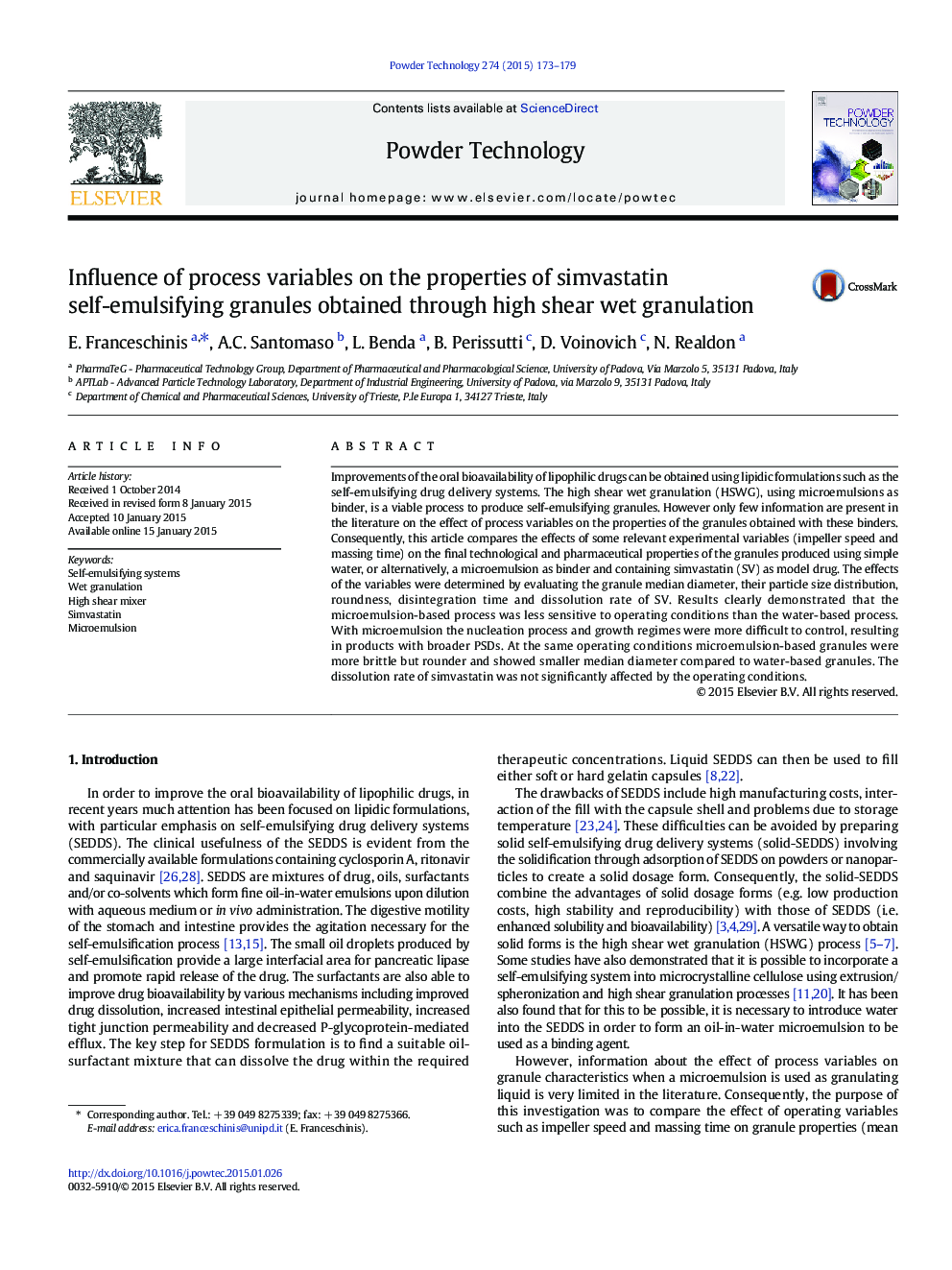| کد مقاله | کد نشریه | سال انتشار | مقاله انگلیسی | نسخه تمام متن |
|---|---|---|---|---|
| 235711 | 465645 | 2015 | 7 صفحه PDF | دانلود رایگان |
• Wet granulation process in high shear mixer is a useful technique to produce SEDDS.
• Granules containing microemulsion can be used to increase dissolution of simvastatin.
• Properties of microemulsion based granules are insensitive to operating conditions.
• Microemulsion based granules are more plastic and rounder than water based granules.
Improvements of the oral bioavailability of lipophilic drugs can be obtained using lipidic formulations such as the self-emulsifying drug delivery systems. The high shear wet granulation (HSWG), using microemulsions as binder, is a viable process to produce self-emulsifying granules. However only few information are present in the literature on the effect of process variables on the properties of the granules obtained with these binders. Consequently, this article compares the effects of some relevant experimental variables (impeller speed and massing time) on the final technological and pharmaceutical properties of the granules produced using simple water, or alternatively, a microemulsion as binder and containing simvastatin (SV) as model drug. The effects of the variables were determined by evaluating the granule median diameter, their particle size distribution, roundness, disintegration time and dissolution rate of SV. Results clearly demonstrated that the microemulsion-based process was less sensitive to operating conditions than the water-based process. With microemulsion the nucleation process and growth regimes were more difficult to control, resulting in products with broader PSDs. At the same operating conditions microemulsion-based granules were more brittle but rounder and showed smaller median diameter compared to water-based granules. The dissolution rate of simvastatin was not significantly affected by the operating conditions.
Figure optionsDownload as PowerPoint slide
Journal: Powder Technology - Volume 274, April 2015, Pages 173–179
